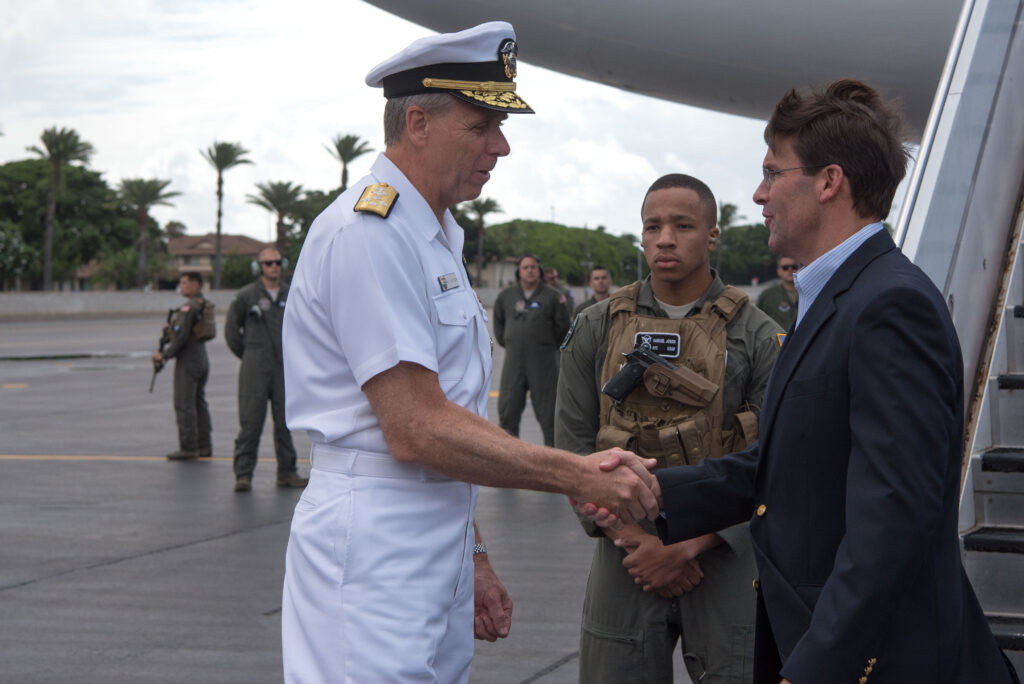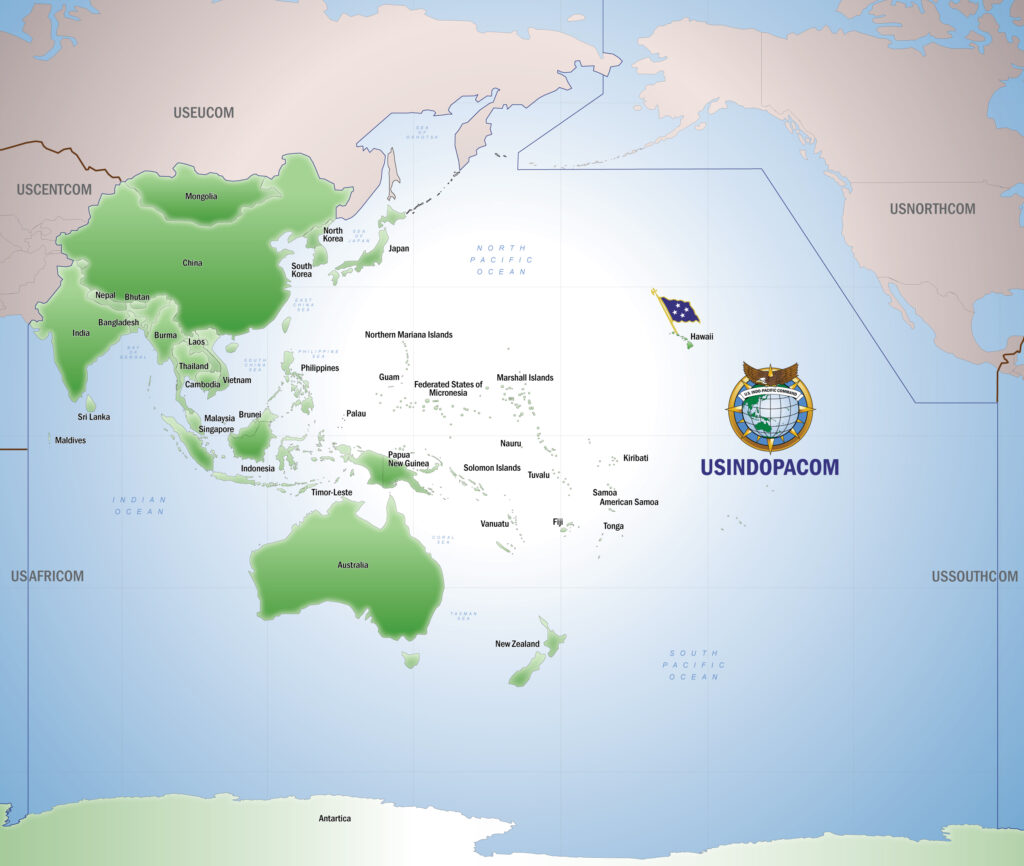By THERESA HITCHENS

WASHINGTON: Indo-Pacific Command has drafted a new warfighting concept for the Asian theater, designed to parallel the global Joint Warfighting Concept spearheaded by the Joint Staff, says George Ka’iliwai, INDOPACOM director for requirements.
The new INDOPACOM Warfighting Concept (IPWC) is being shepherded by the command’s J5 planning directorate, Ka’iliwai, who heads the J8 section (requirements), told reporters at the National Defense Industrial Association (NDIA) POST conference on Friday.
“As far as progress, the J5 has completed the concepts behind the IPWC. The J5 has also done what we call a ‘roadshow,’ and as socialized and vetted the IPWC with our component commanders,” he said. “And we still have a ways to go as far as working through the Department of Defense.”
Ka’iliwai, who goes by the moniker “Dr. K,” explained that the new regional warfighting strategy is aimed at countering more aggressive China — pointing to the recent testimony by INDOPACOM Commander Adm. Phil Davidson to the House and Senate Armed Services Committees.
Davidson has been pushing hard for his his Pacific Deterrence Initiative (PDI), a five-year, $27 billion effort. DoD asked for $4.6 for the PDI in 2022; more than double the $2.2 billion in the Trump administration’s 2021 request. His top priority in that plan is to get an Aegis Ashore air and missile defense system put in place on Guam.
“I’m sure you’re tracking everything that the commander was saying during his testimony this past week with the SASC as well as the HASC, and the challenges that that we’ll be facing in a potential conflict — a kinetic conflict primarily — with our adversaries within the region,” Ka’iliwai said. “And so the IPWC is intended to make that joint force whole — how do we bring everything together through our concept of operations to be able to react very quickly should we should we be asked to respond in such a way?”
Work actually started on the IPWC before the launch of the Joint Warfighting Concept effort by former Defense Secretary Mark Esper, Ka’iliwai noted. Esper had tasked the Joint Staff to come up with the concept — which rests on four key areas of operations: joint long-range fires; all-domain command and control; logistics under attack; and “information advantage” — by December. However, the deadline was pushed back until this spring as a result of the COVID-19 pandemic.
“We started off with an Indo-Pacific warfighting concept, and then the department also started doing work with the Joint Warfighting Concept, and we wanted to make sure that we were aligned,” he explained. “And of course COVID hit us, and the timelines for the JWC unfortunately were slowed down, and we weren’t able to meet all of the milestones at the end of the calendar year from last year. As a result, we’ve been moving as fast as we possibly could and can with the Indo-Pacific warfighting concept.”
Once the IWPC is approved, INDOPACOM intends to undertake a series of experiments and exercises to flesh out how it should be best implemented, he added.

INDOPACOM map
Davidson, in a speech last March, said that the new warfighting concept needs to focus not just on defeating China, but also deterring Beijing by denying the PLA easy targets. For example, he said, forces in the region need to be more dispersed.
Further, he said, the Joint Force must not simply rely on missile defenses, but be better able to hold PLA forces as risk. “In the Indo-Pacific, our Joint Force must more fully integrate its special operations forces, cyber capabilities, space forces, and ground forces equipped with long-range fires, to present an effective deterrent that holds an adversary – and all that adversary holds dear – at risk”.
Ka’iliwai said the IPWC also is directly tied to INDOPACOM’s work on Joint All Domain Command and Control (JADC2), and currently is “laying in our requirements for what we believe the JADC2 would look like. As my one of my former commanders has stated to me, his weapon system, the commander’s weapon system, is command and control. That is what he does.”
JADC2 is the emerging strategy for how the Joint Force will command the highly automated, fast paced and globalized battlefields of the future, now also sitting on Milley’s desk.
“We’ve been intimately involved in all things related to Joint All Domain Command and Control,” he said. As you know, each of the services are pursuing various command and control constructs. You’re very familiar, I think, with Project Convergence in the US Army, Project Overmatch with the US Navy. The Air Force, I think, has really been a driving force behind the JADC2 in the way of CONOPS, or concept of operations development, and some of the tactics, techniques and procedures that will go into that as well. And they’re doing that materially through their ABMS [Advanced Battle Management System] program — so we’re tied in directly with all of these efforts.”
INDOPACOM already has been working on some experimental tech to implement JADC2 with DARPA, Ka’iliwai said, although neither he nor a DARPA spokesperson would go into any detail citing the sensitive nature of the efforts.
“We also have a very robust experimentation program when it comes to JADC2,” Ka’iliwai said. “We’ve actually exercised some of those constructs during our recent exercise Valiant Shield in the fall of last year.”
No comments:
Post a Comment